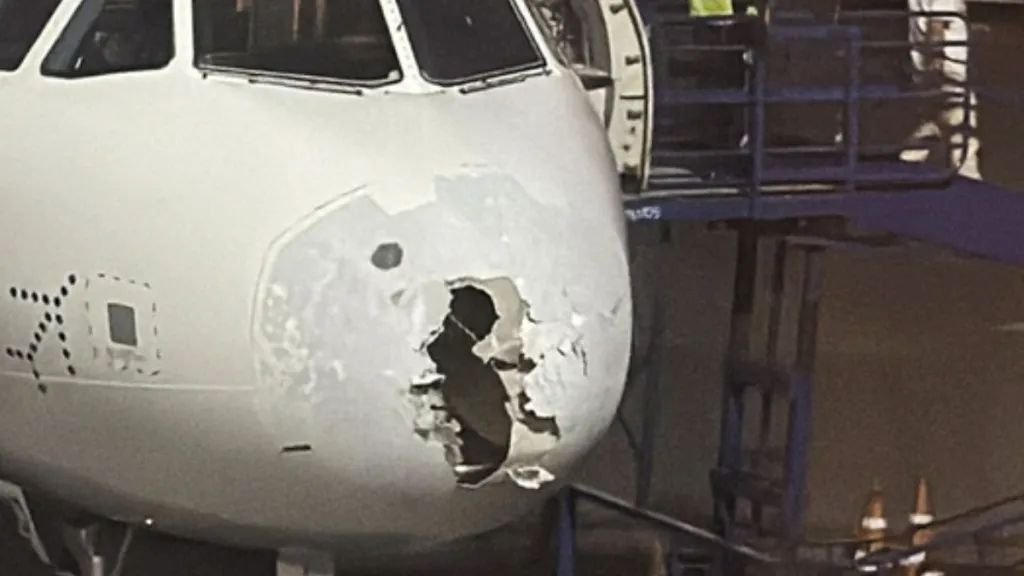On May 21, 2025, an IndiGo Delhi-Srinagar flight faced a harrowing ordeal when the pilot was denied entry into Pakistani airspace amid a turbulence emergency. This incident has sparked widespread concern over cross-border aviation protocols and passenger safety.
In a shocking incident that raised serious aviation safety concerns, an IndiGo Delhi-Srinagar flight was denied entry into Pakistan airspace despite declaring a turbulence emergency. The flight, carrying passengers from Delhi to Srinagar, encountered severe mid-air turbulence, prompting the pilot to request an alternate route through Pakistani airspace for safety reasons. However, Pakistan’s air traffic control (ATC) denied permission, forcing the aircraft to navigate through challenging weather conditions. This incident has sparked debates over aviation protocols, regional airspace restrictions, and passenger safety.
The Flight and the Storm: A Timeline
IndiGo flight 6E2142, an Airbus A321, departed from Delhi en route to Srinagar with 227 passengers on board. Midway through the journey, the aircraft encountered a sudden and severe hailstorm, leading to intense turbulence. Passengers described the experience as terrifying, with many screaming and praying as the plane shook violently.
Understanding the Incident: What Happened on the IndiGo Flight?
On [May 21, 2025,], IndiGo flight 6E-1405, operating from Delhi to Srinagar, faced unexpected severe turbulence. The pilot, prioritizing passenger safety, sought permission to enter Pakistan’s airspace for a smoother and shorter route. However, the request was denied, leaving the aircraft to manage the turbulence without an optimal diversion path.
Read Also: Operation Sindoor: PM Modi’s Strong Warning to Pakistan as Tensions Escalate
Source: India Today
Details of the Incident
- Flight Route: Delhi (DEL) → Srinagar (SXR)
- Aircraft Type: Airbus A320
- Reason for Diversion Request: Severe turbulence and passenger discomfort
- Pakistan ATC’s Response: Denied entry without clear explanation
- Outcome: Flight continued on original route, landed safely but with heightened risk
Emergency Measures and Denied Airspace
Facing deteriorating weather conditions, the pilot sought permission to enter Pakistani airspace to navigate around the storm. However, Lahore Air Traffic Control denied the request. Consequently, the pilot declared an emergency and coordinated with Srinagar ATC to ensure a safe landing.

Why Was Pakistan’s Airspace Denied?
The refusal to grant emergency access raises questions about aviation diplomacy and regional tensions. Historically, Pakistan has restricted its airspace to Indian flights due to political disputes, but emergency situations typically warrant exceptions under International Civil Aviation Organization (ICAO) guidelines.
Possible Reasons for the Denial
- Political Tensions: Ongoing strain between India and Pakistan may influence ATC decisions.
- Operational Protocols: Pakistan’s strict airspace policies for Indian flights.
- Communication Gaps: Misunderstanding or lack of clarity in emergency declarations.
Aviation Safety Concerns: How Dangerous Is Mid-Air Turbulence?
Turbulence is a common yet potentially hazardous phenomenon in aviation. While most cases are mild, severe turbulence can lead to:
- Passenger injuries (from falls or unsecured objects)
- Structural stress on the aircraft
- Emergency diversions for safety
Types of Turbulence
| Type | Cause | Severity |
|---|---|---|
| Clear Air Turbulence (CAT) | High-altitude wind shear | Sudden & unpredictable |
| Convective Turbulence | Thunderstorms | Most dangerous |
| Mechanical Turbulence | Mountain waves | Moderate risk |
Pilots rely on weather radars and ATC coordination to avoid turbulence, but sudden changes can necessitate emergency rerouting—something the IndiGo Delhi-Srinagar flight attempted before being denied.
How Do Airlines Handle Emergency Diversions?
When a flight declares an emergency, international aviation rules require neighboring airspaces to assist. Key protocols include:
- Immediate ATC coordination for priority handling
- Priority landing clearance at the nearest suitable airport
- Unrestricted airspace access for emergency reroutes
The IndiGo flight incident highlights a gap in this system, as Pakistan’s refusal could have escalated risks.
Passenger Reactions and Airline Response
Passengers onboard reported extreme discomfort, with some describing the turbulence as “the worst they’ve ever experienced.” IndiGo issued a statement confirming the incident and emphasizing that passenger safety was never compromised, but concerns remain over airspace restrictions during emergencies.
IndiGo’s Official Statement
The flight encountered unexpected turbulence, and the crew followed all standard procedures. While we sought an alternate route, we respect international aviation norms and ensured a safe landing.
Broader Implications for India-Pakistan Aviation Relations
This incident underscores deeper issues in India-Pakistan aviation relations:
- Restricted airspace increases flight durations and fuel costs.
- Emergency protocols need clearer enforcement to avoid safety risks.
- Diplomatic interventions may be necessary to ensure smoother aviation operations.
What Can Be Done to Prevent Similar Incidents?
To avoid such situations in the future, stakeholders must consider:
- Strengthening ICAO’s role in enforcing emergency airspace access.
- Improving India-Pakistan aviation dialogue for crisis scenarios.
- Enhancing real-time weather tracking to minimize turbulence risks.
Final Thoughts: Safety Must Override Politics
The IndiGo Delhi-Srinagar flight incident serves as a wake-up call for aviation authorities. While geopolitical tensions exist, passenger safety should never be compromised. Stricter enforcement of global aviation emergency protocols is crucial to prevent such denials in the future.